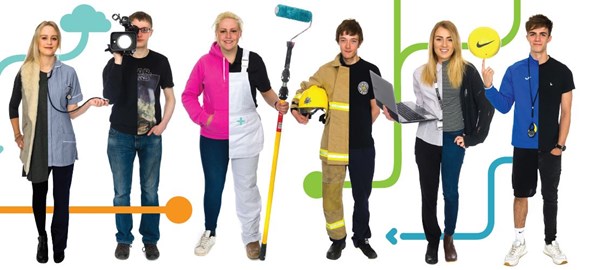
A four-year college education has become the norm for many young people, but does that mean it’s the best plan? Consider this: sending our kids into a changing workforce where the only common thread is an astronomical level of student debt isn’t saving them from a minimum-wage job. Entering the trades instead is a savvy choice--and here’s why:
In fields such as healthcare, computer science, and the skilled trades, you often only need a certification, apprenticeship, or some form of on-the-job training to land a lucrative position earning more than $100,000 AUD a year. Just ask Summer Crenshaw, Luke Vigeant, and Carisa Miklusak, the co-founders of Tilr, an American startup redefining how companies recruit. They chose to launch their company with a cutting-edge concept: match job seekers with companies based on skills, not past titles.
According to one of their business clients, the CEO of GenIV Technology, when a skill-matching approach is used, “the numbers don’t lie--quality and efficiency [have] gone up and our overhead has gone down.” The trades have known this for years. Workers with certifications and experience stand out and are hired for high-paying jobs because companies and clients know they’re qualified and capable to take on projects.
Thus, one of the best choices a young person can make is to search for apprenticeships straight out of high school. There’s no shortage of options. Brick masons, steelworkers, and electricians all offer apprenticeship opportunities, equipping your kid with the skills to succeed in the field.
An industry outlook publication released recently by the Australian Contractors Association (ACA) found that businesses are finding it incredibly challenging to source skilled labor. 69.2 percent of responders report that they have “major” or “moderate” difficulty recruiting skilled labour, and an additional 57.8 percent reported that it was equally hard to find qualified sub-contractors. You hear anecdotal support for these statistics across the trades. Construction foremen leave lumber unused because they lack people power, and small business owners struggle to replace expert craftspeople as they retire.
This won’t change by the time your kid enters the field. According to the ACA outlook report, companies will continue to struggle to source skilled tradespeople, even though their services are highly in demand. Under these circumstances, young people directly benefit from the laws of economics: when supply goes down, job opportunities, benefits, and wages all go up.
You’ve heard the statistic: college graduates earn more money than those with an associate’s degree or less. It’s used to prove that college is one of the best lifetime investments a young person can make--only it’s a misleading generalisation. According to Richard Hayes, director of the Manufacturing, Electrotechnology Faculty of TAFE NSW, “more and more, we are seeing that young people coming into trades are going on to successful careers.”
“That doesn’t have to be just banging nails in,” he continues. “[T]hey go on to management of building companies and contractors, and will manage large organisations and lead large teams of people. That can be very rewarding for them personally, but also financially as well.”
In most wage comparisons, the salaries of skilled tradespeople such as master carpenters, electricians, and masons are lumped in with those of minimum-wage workers at 7-Eleven, Costco, and Target. So, let’s look at the “wage gap” using different criteria.
Let’s say your kid wants to be a plumber. In Australia, the average plumber charges $78.40 AUD an hour. Now compare that to the average Australian lawyer, who, according to PayScale, earns around half of that amount at $30.94 AUD an hour. Is it difficult, then, to secure a job in the field? Nope. Plasterers, carpenters, panel beaters, cabinet makers, plumbers, and electricians all make news.com.au’s list of the top 20 jobs most in demand.
In short, if your kid wants to land a valuable job making money, the savvy option isn’t to attend university. It’s sending them into the trades.